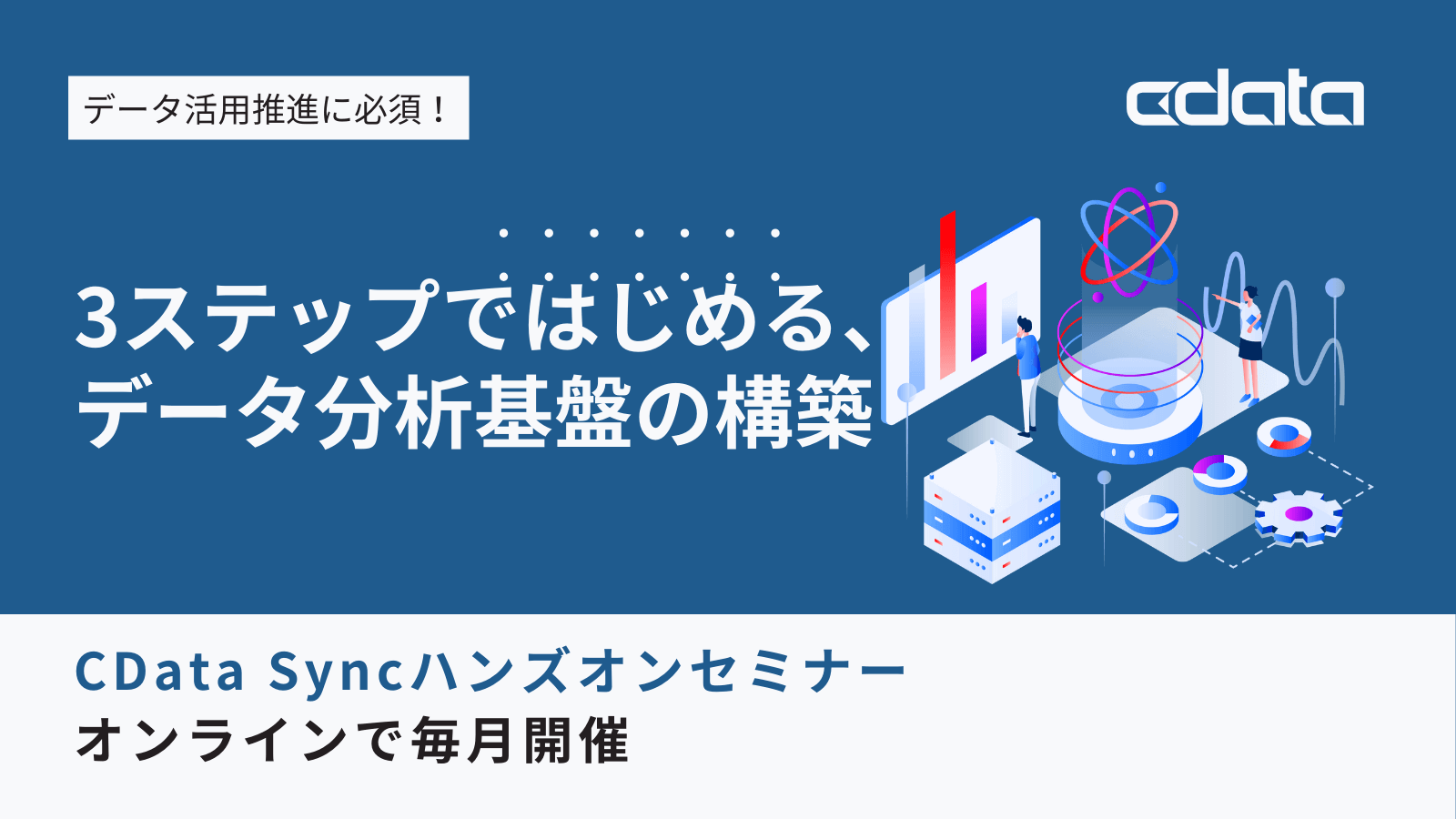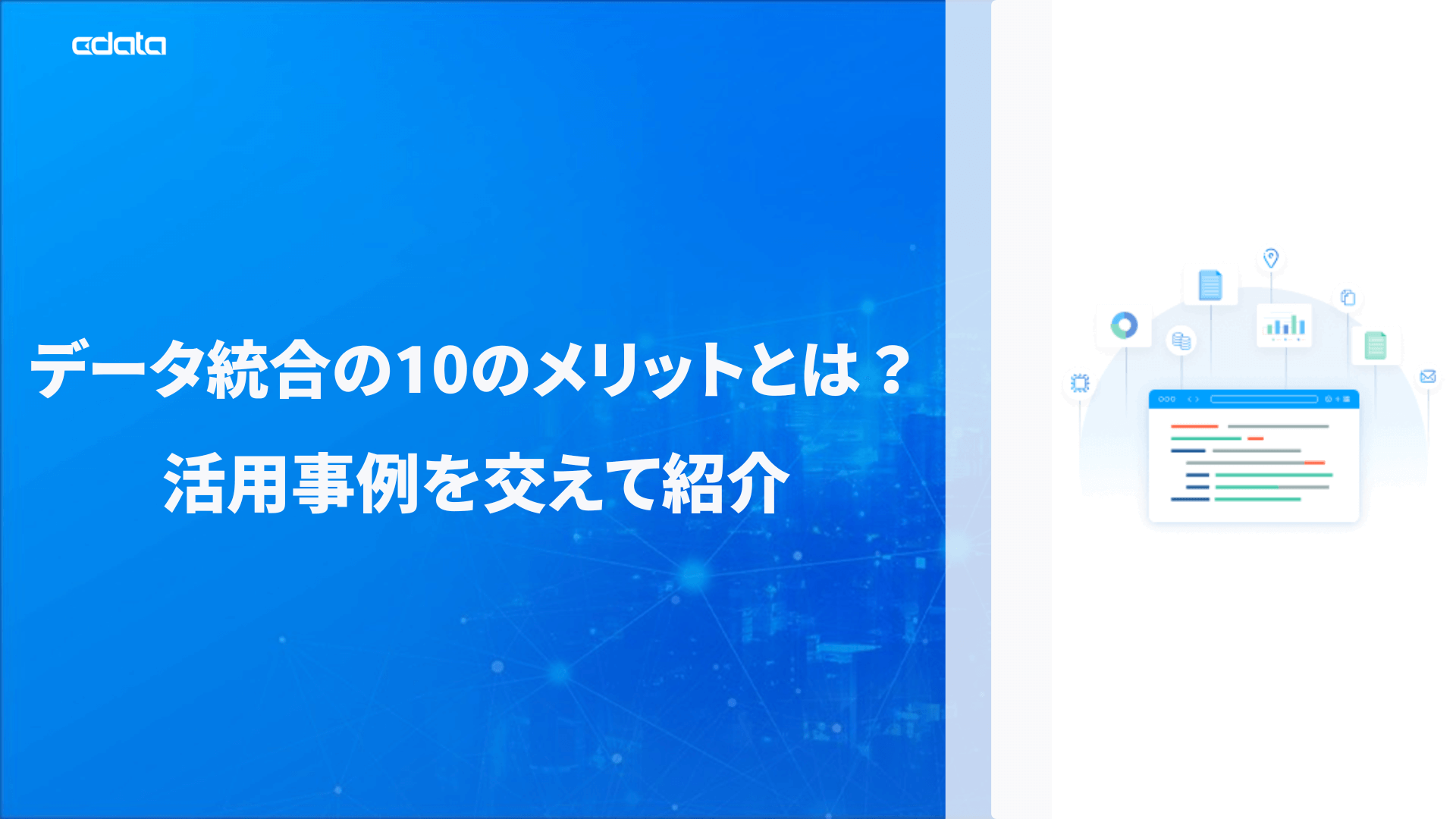ノーコードでクラウド上のデータとの連携を実現。
詳細はこちら →CData Software Japan - ナレッジベース
Latest Articles
- MySQL のデータをノーコードでREST API として公開する方法:CData API Server
- CData Sync AMI をAmazon Web Services(AWS)で起動
- Connect Cloud Guide: Derived Views, Saved Queries, and Custom Reports
- Connect Cloud Guide: SSO (Single Sign-On) and User-Defined Credentials
- Connect Cloud クイックスタート
- Shopify APIのバージョンアップに伴う弊社製品の対応について
Latest KB Entries
- DBAmp: Serial Number Expiration Date Shows 1999 or Expired
- CData Drivers のライセンスについて
- Spring4Shell に関する概要
- Update Required: HubSpot Connectivity
- CData Sync で差分更新を設定
- Apache Log4j2 Overview
ODBC Drivers
- [ article ] Crystal Reports にYouTube Analytics を連携してYouTube ...
- [ article ] Tableau Bridge でTableau Cloud からのSurveyMonkey ...
- [ article ] Waha! Transformer からCData Software ODBC Driver ...
- [ article ] Microsoft Access リンクテーブルからCouchbase データに接続・更新する方法
JDBC Drivers
- [ article ] Denodo Platform でOdoo データソースを作成
- [ article ] 帳票ツールのCROWNIX でLDAP データを取り込んだ帳票を作成する
- [ article ] FineReport にCloudant のデータを連携してビジュアライズ・レポートを作成
- [ article ] Create!WebフローのサブフォームにAzure Synapse ...
SSIS Components
- [ article ] Bing Ads データからSQL Server ...
- [ article ] SAP Fieldglass データからSQL Server ...
- [ article ] SAP SuccessFactors データからSQL Server ...
- [ article ] Garoon データからSQL Server ...
ADO.NET Providers
- [ article ] ColdFusion にリアルタイムDatabricks ...
- [ article ] SSIS を使ってFacebook Ads データをSQL Server にインポート
- [ article ] SSRS レポートサーバーにADO.NET Provider を配置してPower BI XMLA ...
- [ article ] ADO.NET 経由でTIBCO Spotfire でAsana データに連携してをビジュアライズ
Excel Add-Ins
- [ article ] Microsoft Power Query からAct-On データに連携してExcel から利用
- [ article ] Power View でのFacebook Ads データのインポートとビジュアライズ
- [ article ] StiLL からCData Software ODBC Driver を使ってTally ...
- [ article ] Microsoft Power BI Designer でCData Software ODBC ...
API Server
- [ article ] PyCharm でCData Software ODBC Driver を使ってOData に接続
- [ article ] OData データを帳票ツールbiz-Stream で連携利用する方法
- [ article ] Magic xpi からCData Software ODBC Driver を使ってOData ...
- [ article ] SSAS でOData データに連携するOLAP Cube を作成
Data Sync
- [ article ] Microsoft Exchange データのAzure SQL への自動レプリケーション。
- [ article ] Azure Synapse へのRSS データのETL/ELT ...
- [ article ] Oracle データベースへのBacklog データのETL/ELT ...
- [ article ] Apache Cassandra へのGitHub データのETL/ELT ...
Windows PowerShell
- [ article ] PowerShell からFHIR データに接続してデータの取得・更新・挿入・削除・CSV ...
- [ article ] Active Directory データをPowerShell でMySQL ...
- [ article ] Oracle Service Cloud データをPowerShell script でSQL ...
- [ article ] PayPal データをPowerShell でMySQL にレプリケーションする方法
FireDAC Components
- [ article ] Delphi のGmail データへのデータバインドコントロール
- [ article ] Delphi のAmazon Athena データへのデータバインドコントロール
- [ article ] Delphi のTeradata データへのデータバインドコントロール
- [ article ] Delphi のKintone データへのデータバインドコントロール






